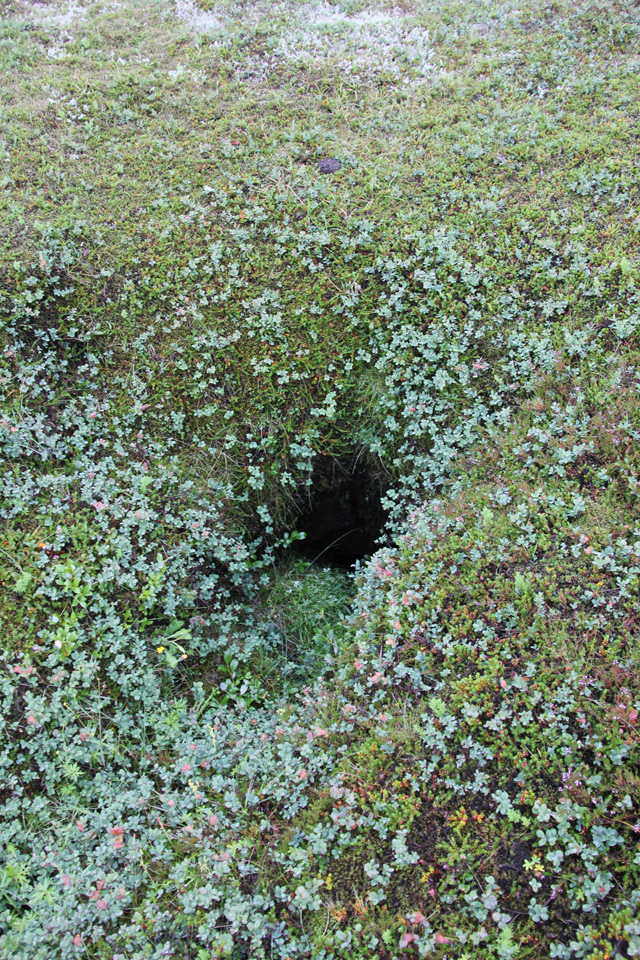My first pick is Claire Sherman. I met her at an art school in Umbria, Italy, roughly 10 years ago and admired her kindness and composure that provided a near comedic contrast, at least in my mind, to the rest of us there, who were basically undersupervised, but legally adult, hooligans. Her paintings have, of course, changed over the years — consistently representational, as far as I know — but her unrelenting workaday diligence to her processes has not altered.
Her recent bodies of work are in reference to (and in tension with) the landscape, as they fixate on particular visual events in nature and find ways to transpose and recompose the discreet entities at work within them. Firm strokes have sculptural assignments, doing double duty as elements of construction and serving, also as flagrant displays of paint’s optical richness. Each painting has, more or less, its own sustained speed and temperature, and variously scaled marks are often clumped together and interlinked or worked into explosive orchestrations.
* * *
Rob Colvin: Why did you become an artist?
Claire Sherman: I became an artist because art making keeps me engaged with the world and moving towards finding and learning new things. I work in my studio all day and still look forward to doing it again the following day. The physical quality of paint is something I find very seductive. Paint has the ability to describe, fall apart, be chaotic, rigid, uncontrollable, fluid, and surprising all at once.

RC: How would you describe your development and what you’re doing now?
CS: My work has developed gradually over the last eight years or so. I don’t work regularly in series — one thing usually leads gradually to the next, depending on what I’m looking at, reading, and where I’ve travelled recently. Initially, my paintings were informed by imagery that I found (postcards, travel books, landscape books). However, in the last five years I’ve started working primarily from photographs that I take myself while on the road visiting locations ranging from Big Bend, TX, Craters of the Moon, ID, Iceland, Zion, UT, to Death Valley, CA, among many many others.
Generally, my work meanders intentionally between subjects. However, I’m currently working on paintings that are more visually related to each other than my paintings have been in the past. I’m working from photographs that I took recently on trips to the coastal Redwoods in California, as well as Sequoia and King’s Canyon, CA. These paintings maintain my interest in scale, abstraction, and ambiguity.

RC: Have you been influenced by anyone or anything in particular?
CS: Hmm. Lots of things: Music of all sorts is very important to me, both in terms of its relationship to the visual, but also as part of my process as I basically can’t work without it. Reading fiction and nonfiction is also vital — writers such as William Faulkner, Cormac McCarthy, David Foster Wallace, Edmund Burke, Isabella Bird, and John Muir. I’m currently reading The Flamethrowers by Rachel Kushner.
Listening, reading, and looking at other artists are all important, as is travel. Most of my paintings are based on those travel photographs I mentioned. Where I have gone, and where I am planning to go directly impact the paintings that I make. Since moving to New York, my desire to get on the road in the summer has increased. I need to see parts of the country that are more open and expansive, and to help feed my work with new places, experiences, views. I have to periodically get out of the chaos of New York, hit the road, and SEE.

RC: What challenges are unique to your process?
CS: I am a bit manic in the studio. Many of my paintings come together in a day with minor changes made after that initial burst of 12–15 hours in the studio. So the paintings that you see are mostly representative of that day’s struggles, successes, failures, when everything is wet and anything is possible. It means that a lot is at stake, so the first day of painting is usually a whirlwind of joyful stress, pain, elation, fear, and exhaustion. Either the painting works, or it falls flat. I continue to work on the paintings after this initial long session, but the large decisions were made in the first day and the painting usually either succeeds or fails based on these initial choices. I’m not a painter that believes in hashing it out with a painting in the studio over a long period of time. It either works or it doesn’t. And sometimes the awkward failures are OK, too.


RC: If you could own any work of art, what would it be?
CS: I think it is a three-way tie between the following:
- Henri Matisse, “The Rose Marble Table” (1917)
- Edouard Manet, “Berthe Morisot with a Veil” (1872)
- Francis Bacon, “Man with Dog” (1954)
RC: So what is art anyway?
CS: I’m not sure I can answer that. But I think it might be found in this hole I saw while traveling in Iceland.

RC: Who should be interviewed next?
CS: Rhona Bitner. Her recent photographs of rock-and-roll performance spaces are haunting, and she makes stunning parallels between historic spaces and sound. Her work takes on the mythic quality of the venues she is imaging … you can hear her photographs.
